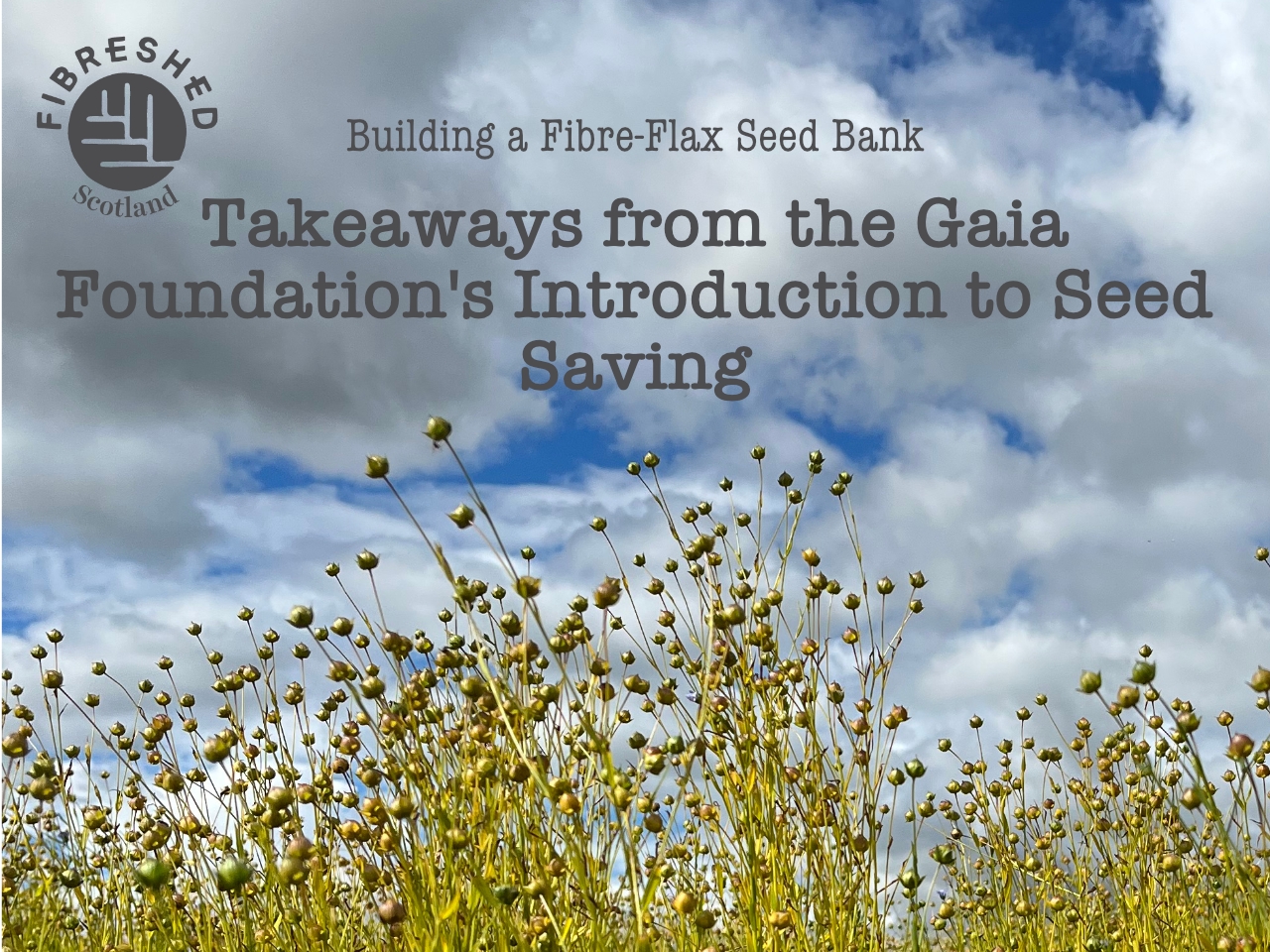Introduction to Seed Saving Course Takeaways
Our key theoretical and practical takeaways from the Gaia Foundation's Introduction to Seed Saving course.

Nick Evans and Colleen McCulloch
On the 17th and 24th of February, Colleen and Nick attended the Gaia Foundation’s Introduction to Seed Saving Course. This consisted of two 3h sessions, during which Sinéad Fortune and Richie Walsh talked us through the basic knowledge required to get started on a seed saving project. The first session covered overall motivations for seed saving, some basic plant biology and some specific tips and tricks to consider when growing plants for seed. The second session covered the politics and history of seed production in the UK, and incorporating seed saving into an existing food production system, with a look at a couple of specific crops in more detail. Here are a few selected takeaways:
Seed Sovereignty is Important
Seed Sovereignty is defined following the principles of Food Sovereignty, as expressed by La Via Campesina:
Food Sovereignty is the right of peoples to healthy and culturally appropriate food produced through ecologically sound and sustainable methods, and their right to define their own food and agriculture systems.
Sinéad explained that since 1900, we have lost 75% of our genetic crop diversity, and 60% of global seed is controlled by 4 companies (see Phil Howard’s blog for more insights into the global seed industry). These two numbers highlight the importance of reclaiming our access to and choice of seed. This can be achieved by becoming a seed saver.
Commercialisation has driven a loss of diversity
Before the Victorian Era when more folk started living in towns, seed breeding companies didn’t really exist because folk in every community saved & swapped seed - which was already adapted to local conditions. The early 1900s then saw a growth in companies producing seed to sell to growers, standards being introduced (e.g. around germination), and later legislation such as the 1960s Seed Act which mandated standardisation and allowed the commodification of the commons leading to a rapid and terrifying loss of diversity. The capitalist machine continues to push for ever greater control over what and how we grow, breeding seed that relies upon the chemicals they also sell (clever, right?) - but growers and seed savers are finding ways to push back and highlight the need for reseeding diversity. There is currently a change in legislation being considered which would allow growers in Scotland, and later the UK to legally grow mixed (locally adaptive) populations.
Self vs Cross Pollination
When saving seed from a specific plant, it is important to understand how that plant pollinates as this impacts how likely the plant’s offspring (the seed) are to retain its characteristics (this is called breeding “true to type”). Very roughly said - if we are saving seed from a broccoli plant, we want those seeds to produce broccolis and not an unpredictable hybrid between a broccoli and the brussel sprouts that were growing nearby. There are two types of pollination: self and cross. Plants that self-pollinate (like peas) do not pick up genetic material from surrounding plants and therefore are more likely to produce seeds that breed “true to type”. Plants that cross pollinate (are self-incompatible, like broccoli) require pollination from a different plant. This means they are liable to picking up genetic differences during the pollination process. The seed saver must therefore be careful to control the circumstances under which pollination occurs to restrict the chance of undesired hybridization. Fortunately for our project, flax is considered self-pollinating, which makes seed saving easier as we don’t need to go to great lengths to protect the genetic material of our chosen variety.
Beware Inbreeding Depression
While on the one hand we want to protect the genetic material of a plant to preserve its type, we still need to maintain a certain amount of genetic diversity to avoid inbreeding depression. This phenomenon occurs when repeatedly saving seed from a very small crop of plants. For instance, if you only grow 2 or 3 tomato plants every year from seed that you have saved from the previous year’s 2 or 3 plants, you will eventually notice the plants becoming weaker and unproductive - this is inbreeding depression. In order to avoid this, you must save seed from a large enough population of plants (how many depends on the plant). As flax grows very densely, even a few square metres will contain hundreds of plants which suggests that the chances of inbreeding depression will be limited (we still need to check this line of reasoning with the experts…).
Fitting Seed Production into Existing Rotations
Number one takeaway - take good notes! Observe and record everything, and use this in your planning. Also, seed crops can bring in many pollinators which add to the income value of the seed, as well as boosting pollination of other crops.
Take Care of Your Seeds
Seeds must be cleaned and stored dry. The seed alliance has a useful guide to seed cleaning, and Reel seeds have developed an open source seed cleaner.